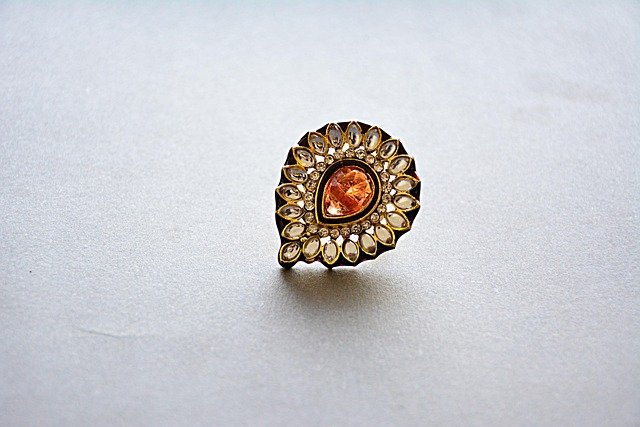Antique Rings: A Journey Through Time and Craftsmanship
Antique rings are more than just jewelry; they are tangible pieces of history that have adorned fingers for generations. These precious artifacts offer a glimpse into the artistry, cultural values, and technological advancements of bygone eras. From intricate filigree work to bold gemstone settings, antique rings showcase the evolution of jewelry design and craftsmanship over the centuries.

How have different eras shaped antique ring designs?
The design of antique rings has been profoundly influenced by the historical periods in which they were created. The Georgian era (1714-1837) saw rings characterized by intricate metalwork and nature-inspired motifs. Victorian rings (1837-1901) often featured sentimental symbols and colorful gemstones, reflecting the romanticism of the age. The Edwardian period (1901-1910) brought about delicate, lacy designs with an emphasis on platinum and diamonds. Art Nouveau rings (1890-1910) embraced flowing, organic forms, while Art Deco (1920-1935) introduced bold geometric patterns and contrasting gemstones. Each era left its unique imprint on ring design, contributing to the rich tapestry of antique jewelry we admire today.
What unique craftsmanship sets antique rings apart?
Antique rings are distinguished by their exceptional craftsmanship, often featuring techniques that have become rare or extinct in modern jewelry making. Hand-engraving, filigree work, and milgraining are hallmarks of many antique pieces, showcasing the meticulous attention to detail of skilled artisans. The use of old-cut diamonds, such as rose cuts or old mine cuts, adds to their distinctive character. These stones were cut by hand, resulting in unique facet patterns that differ from today’s precision-cut gems. Additionally, many antique rings were created using traditional metalworking methods, like hand-forging and repousse, which contribute to their one-of-a-kind nature and enduring appeal.
What styles and detailing are often seen in antique jewelry?
Antique jewelry is renowned for its diverse styles and intricate detailing. Cluster settings, where smaller stones surround a central gem, were popular in Victorian and Edwardian rings. Floral and nature-inspired motifs, including leaves, vines, and butterflies, are common across various periods. Elaborate metalwork, such as pierced galleries and decorative shoulders, adds depth and dimension to many antique rings. Enameling techniques, particularly in Art Nouveau pieces, introduced vibrant colors and flowing designs. Carved gemstones, known as intaglios or cameos, were favored for their artistic value. The use of mixed metals, combining gold with platinum or silver, was also prevalent, creating stunning visual contrasts that are less common in modern jewelry.
How can one identify authentic antique rings?
Identifying authentic antique rings requires a keen eye and knowledge of historical jewelry-making techniques. Hallmarks and maker’s marks can provide valuable information about a ring’s origin and age. The type of metal used can also be indicative; for instance, platinum wasn’t widely used in jewelry until the late 19th century. Examining the cut of gemstones is crucial, as antique stones often have different proportions and facet arrangements compared to modern cuts. The overall construction of the ring, including how stones are set and the intricacy of metalwork, can offer clues to its authenticity. Wear patterns and patina that develop over time can suggest a ring’s age, though these can sometimes be artificially created. For a definitive assessment, consulting with a reputable antique jewelry expert or gemologist is advisable.
What factors influence the value of antique rings?
The value of antique rings is determined by a combination of factors. Age and rarity play significant roles, with pieces from certain historical periods or by renowned designers commanding higher prices. The quality and condition of the ring are crucial; well-preserved pieces with minimal wear or alterations are more desirable. The materials used, including the type and quality of gemstones and metals, greatly impact value. Provenance, or the ring’s documented history, can substantially increase its worth, especially if it has a connection to a notable figure or event. Craftsmanship and artistic merit are also important considerations, with exceptionally well-made or uniquely designed pieces often fetching premium prices. Market demand for specific styles or eras can fluctuate, influencing values over time.
Antique rings offer a unique blend of history, artistry, and romance. These timeless pieces not only serve as beautiful adornments but also as windows into the past, reflecting the tastes, technologies, and traditions of bygone eras. Whether cherished as family heirlooms, collected for their historical significance, or worn as distinctive fashion statements, antique rings continue to captivate with their enduring beauty and craftsmanship. As we appreciate these treasures from the past, we gain a deeper understanding of the rich legacy of jewelry making and the cultural values that have shaped personal adornment through the ages.




